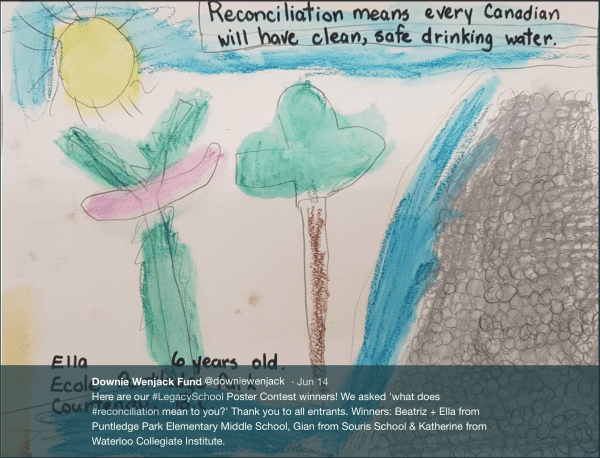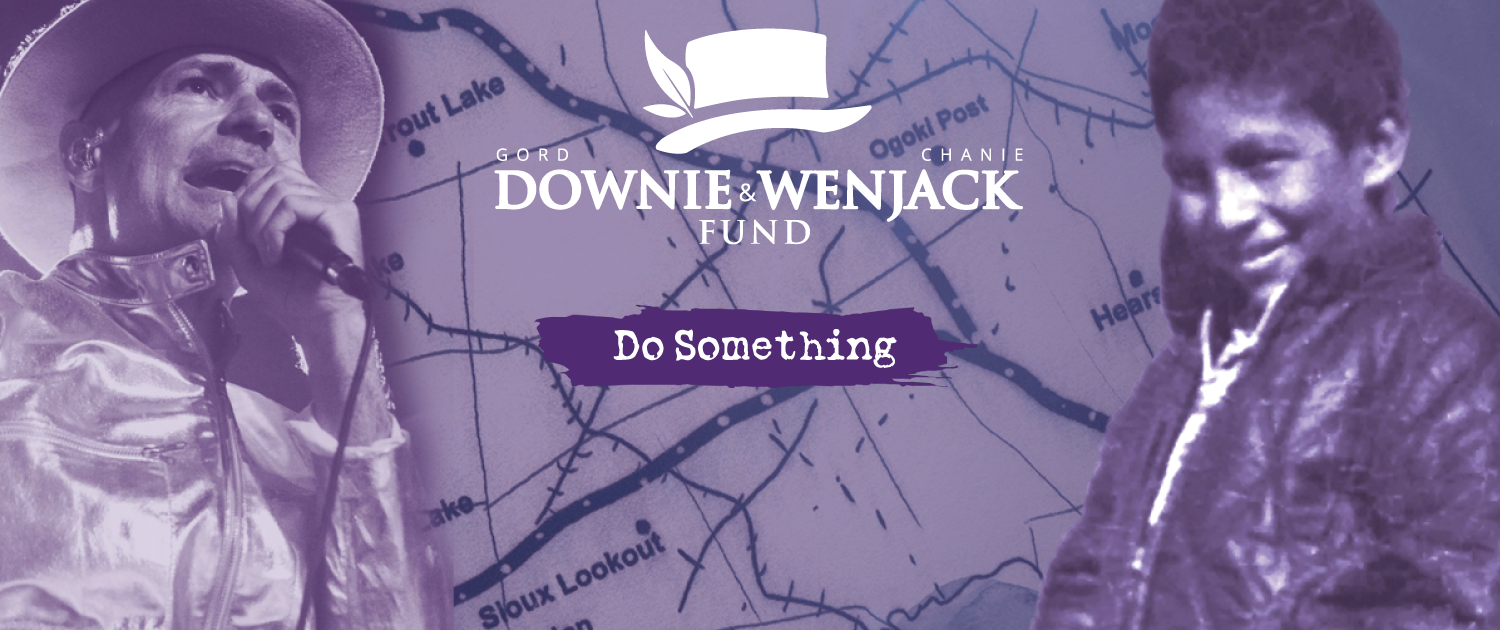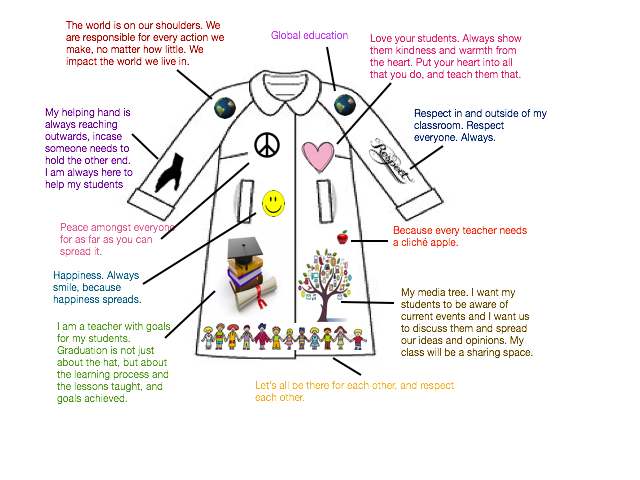
June 21st is National Indigenous People’s Day. I’m taking this moment, four years after the release of the final report on the Truth and Reconciliation Commission on Residential Schools to reflect on the role of teachers, students and schools in responding to reconciliation and highlighting a new resource to use in the upcoming school year.
In April 2013, I had the opportunity to attend events in Montreal as part of Canada’s Truth and Reconciliation Commision on Residential Schools. As a non-Indigenous person, I had become more aware of the history of residential schools in Canada during the previous year and mostly through the work of dedicated teachers using the Project of Hope resources and participation in the Kairos Blanket Exercise, a participatory storytelling exercise of reconciliation.
A refrain that strongly resonated with me was that the story of residential schools is one of the stories of Canadian history. I had not learned about residential schools in my formal schooling. It was later that I was introduced to this long, dark chapter in Canada’s history. It is not something that is easily overcome as a nation.
The Truth and Reconciliation Commission (TRC) outlined Calls to Action, to “advance the process” of reconciliation. As educators, Call to Action 62 speaks directly to our work in schools and with students. It outlines recommendations including “Developing and implementing Kindergarten to Grade Twelve curriculum and learning resources on Aboriginal peoples in Canadian history, and the history and legacy of residential schools”.
It is evident that six years later more work needs to be done, and I was contacted recently by Justin Boehringer, Education Associate of the Legacy Schools program, an initiative of the Indigenous led education organization the Gord Downie & Chanie Wenjack Fund. Justin shared with me a new set of resources for teachers and students to learn about the residential school experience and participate in education for reconciliation.
I had a great conversation with Justin and wanted to share some of the highlights. My hope is that you will register as a Legacy School and use the resources to bring the lessons into your school and classroom.
We, the teachers have the power to respond to the TRC call to action and ensure the next generation knows about the history of residential schools, as one example of racist policies towards Indigenous peoples which must be addressed to create true reconciliation.
I started off by asking Justin how Legacy Schools got started?

Mike Downie – Downie Wenjack Fund
“Legacy Schools got started with Canadian music icon Gord Downie’s book, The Secret Path [a graphic novel and album]. He was working on a book about the story of Chenie Wenjack, a boy who ran away from a residential school in the 1960s. It was the first death of a residential school student that made national headlines back in the 60s. Gord Downie heard about it later in life and it moved him to create this legacy project – to help with Indigenous education across Canada”.
“The Legacy Schools program, is encouraging schools to use the book, The Secret Path to teach students and staff about the Residential School system and Indigenous education, encouraging them to take some action for reconciliation”.
What impact have you seen among the teachers and students that participated in the Legacy Project?
Not just students, but teachers have been able to take their own learning and their own path in Indigenous education They are using the tools to create a reconciliation action. Usually learning takes place using a text book…by becoming a Legacy School, the idea is that learning can happen by taking action, getting out into the community. It’s creating the connection between the schools and community that is a huge benefit for reconciliation as a whole.
I asked Justin what he meant by community and he explained that “community means local Indigenous communities in the local area of the High School or non Indigenous communities. It’s really teaching and helping both of those communities come together”.
So often, it’s just schools doing things on their own, or there is sometimes a disconnect with the school and local community. We really encourage, the connection – bringing in members of the local indigenous community into the school, to be part of the reconciliation action. Whenever doing some sort of reconciliation, the local Indigenous community can join the members of the school in that action.
What kind of support can Legacy Schools offer teachers that get involved?
The most tangible support is the Legacy Schools Toolkit, which includes a copy of the Secret Path book and lesson plans to help teach about residential schools and Indigenous education.
We provide support for actions these schools can take. We provide support in helping them come up with ideas, helping brainstorming how to get from the ideas stage to the action stage.
From your experience, what are some lessons learned when starting a reconciliACTION?
The biggest lesson is about learning about local Indigenous history in the communities of the schools, rather than a textbook. When you can get in touch with a local community and have elders share oral history that you will never find in a textbook. Without this opportunity, some of this stuff will never be learned by the non Indigenous community, because oral history is only really shared through elders passing it down through the younger generation, so if it’s not taught to the younger generations, there is a risk of it being lost forever, so through our Legacy Schools, we’re really encouraging that connection, helping that history stay alive.
What is your hope for the Legacy Schools, one year from now, five years from now? What are you dreaming about?
Currently we’re in over 700 schools across Canada, obviously the end goal would be, to be in every school in Canada to be a member of our Legacy Schools program.
The goal right now is to increase the engagement in our program, encouraging more schools to use this tool to teach about Indigenous history, to teach about residential schools history and showing that one boy’s story can represent the story of thousands of other students.
The end goal is to create an awareness, to normalize Indigenous education and make it an everyday aspect of the school rather than a one-off unit. Having schools take reconciliation and doing action towards it, rather than just talking about it.
Secret Path Week
If you’re interested in becoming a Legacy School, register now so you can be included in the next shipment of resources in September. The resources can be used to participate in the Secret Path Week (October 17-22, 2019).
The Gord Downie and Chanie Wenjack Fund would like to inspire Legacy Schools to use this week to answer Gord Downie’s call to action, to “do something” by creating a reconciliACTION. A reconciliACTION is any meaningful action that aims to bring Indigenous and non-Indigenous people together in the spirit of reconciliation through education, awareness and understanding.
All Legacy schools are asked to participate in Walk for Wenjack during Secret Path week, which culminates in a live concert.
During the lead up to Secret Path week, LEARN will host a webinar to talk about Indigenous Education in Quebec and share reconciliACTIONs. If you are interested in the webinar or becoming part of LEARN’s Education for Reconciliation community subscribe to LEARN’s Ed4Rec newsletter here.






